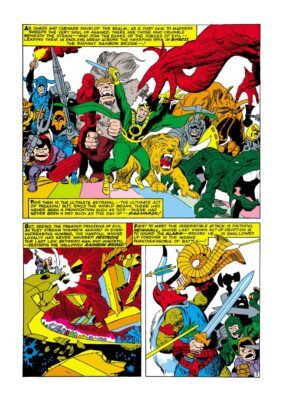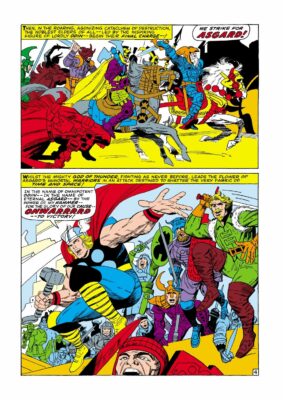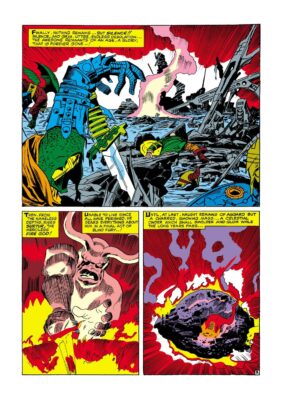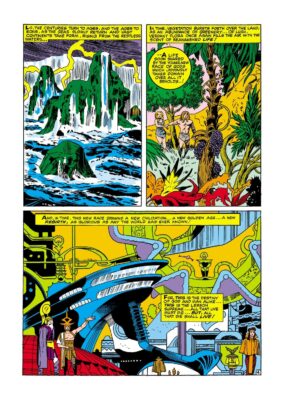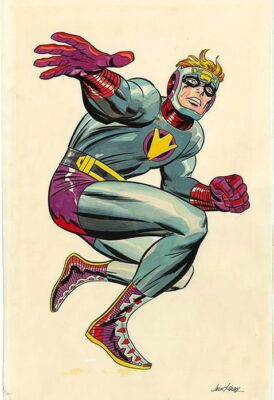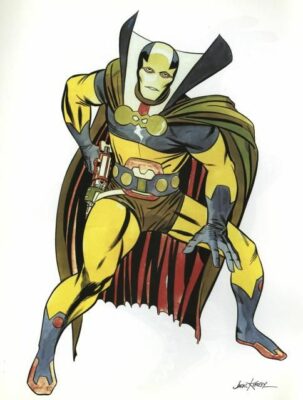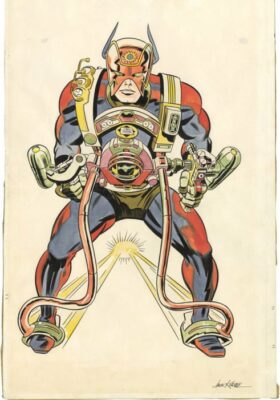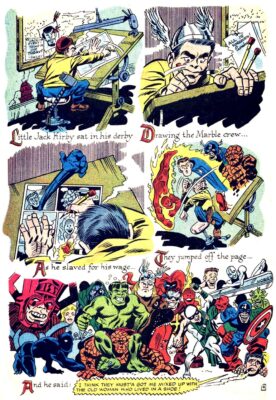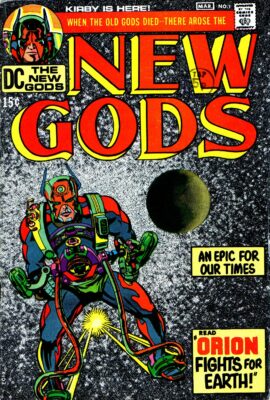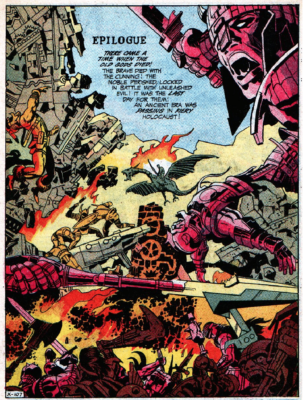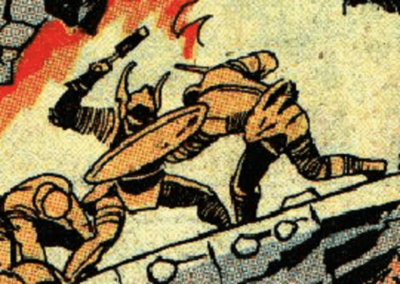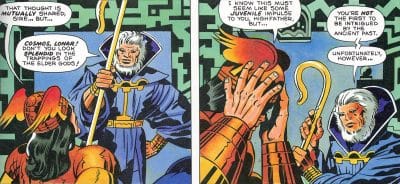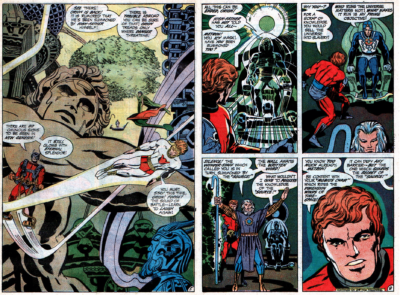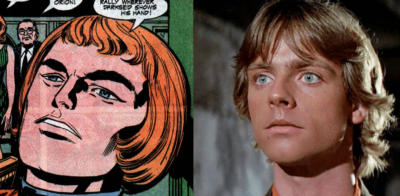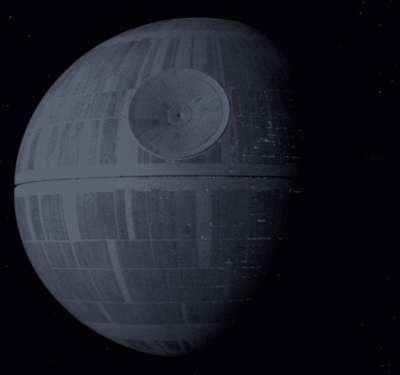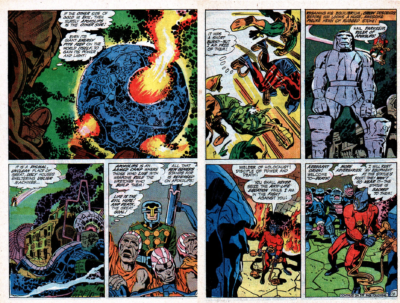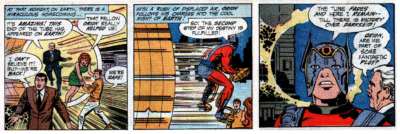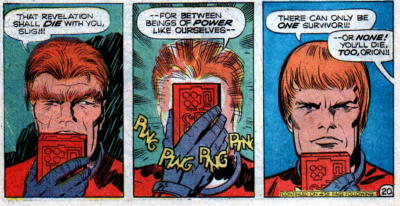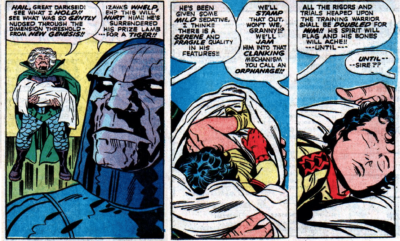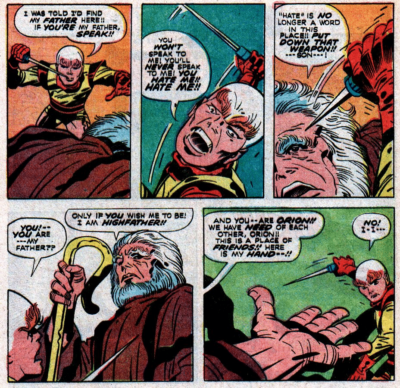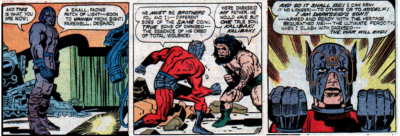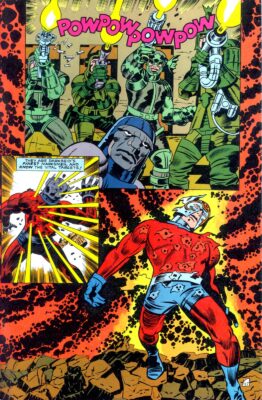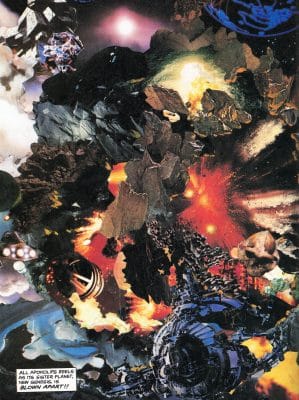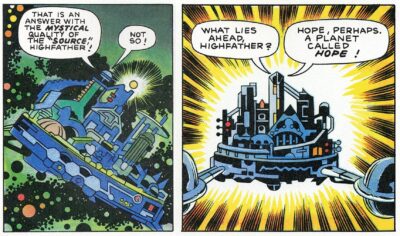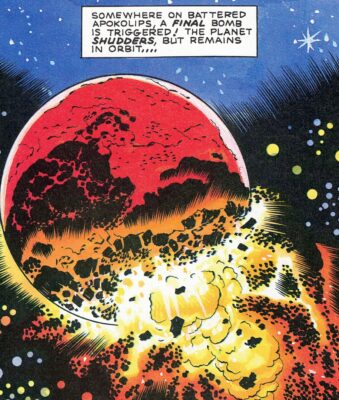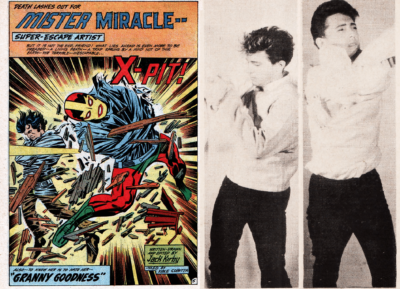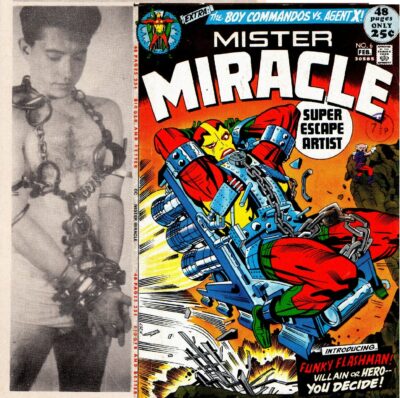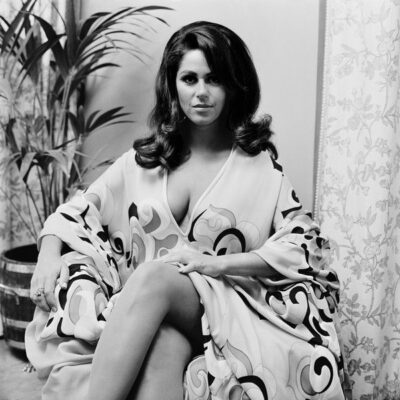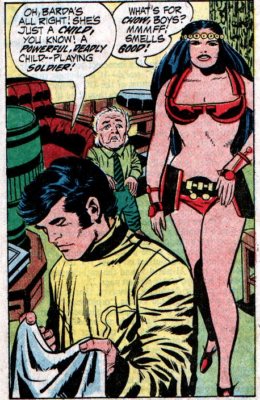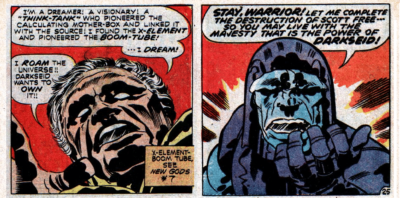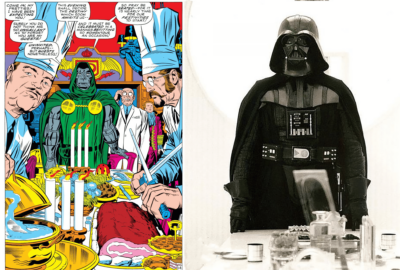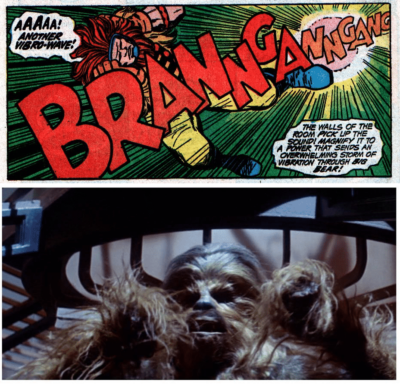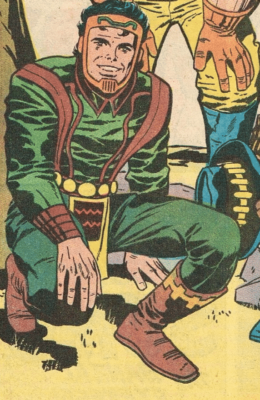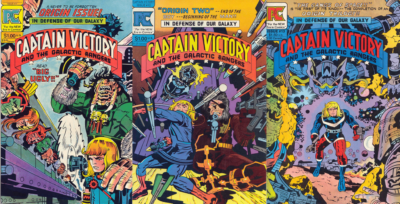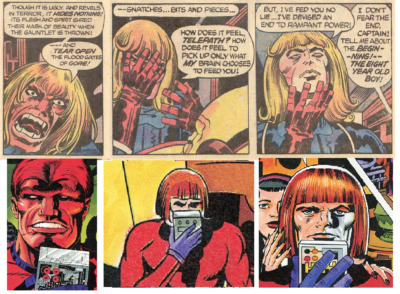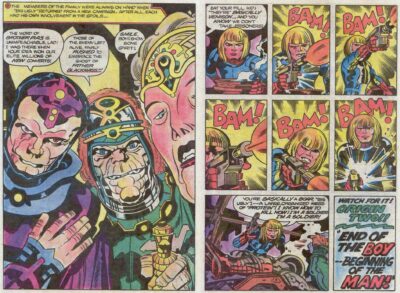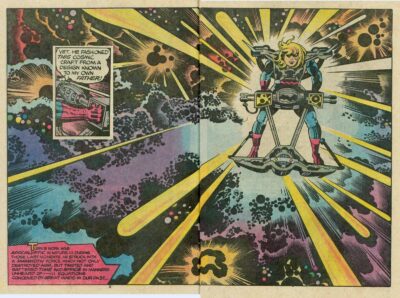Jack Kirby Star God Trilogy: Thor, New Gods & Captain Victory by Alex Grand
Read Alex Grand’s Understanding Superhero Comic Books published by McFarland Books in 2023 with Foreword by Jim Steranko with editorial reviews by comic book professionals, Jim Shooter, Tom Palmer, Tom DeFalco, Danny Fingeroth, Alex Segura, Carl Potts, Guy Dorian Sr. and more.
In the meantime enjoy the show:
Jack Kirby was a concept think tank. As Jim Steranko said, Jack wasn’t analytical about his art, but his hands would move and intuitively he would start from the top left of a page and end up at the bottom right with unconscious ideas put to paper. He was able to pioneer many comic genre’s like Superheros, Romance, Crime and horror, but as mentioned in the “Ancient Aliens in Comics” episode, he would often go back to the epic concept of “Space Gods.” However there were a few works in this genre that were actually related to one another as one large trilogy. Those three are Thor that he worked on in the 1960s with Stan Lee, the New Gods for DC Comics from the early 1970s, and his 1980s series Captain Victory.
Thor is a story of the Norse Gods which Jack Kirby was interested in since he was a child and dabbled in comics since the 1940s. Jack took that interest and with Stan Lee co-created Marvel’s Thor in the 1960s, but there was a time in the later part of that decade when Jack wanted to progress the story through Ragnarok into a second generation of Gods. This was shown in Thor 127-128, 1966 which depicted the Ragnarok of the Norse Gods, where all good things had to come to a cataclysmic end. In the battle to end all things, Thor and Loki die in a battle to the death, a great upheaval brings about the end of Asgard and the birth of “a new civilization… a golden age…” These next Gods were a fusion of Gods with technology, and we dont see any more of this period as it is very likely that Stan Lee and Martin Goodman had no incentive to shake up a money making comic book. Just as we mentioned in the newspaper strip to comic episode, the illusion of change maintains a company’s brand and maintains income, so why significantly progress or evolve a story?.
Around 1967, Jack Kirby felt that he had created or co-created so many concepts for Marvel that he started creating designs for these New God’s and purposely didn’t submit them anywere as he was a freelancer, so why not keep some of his own ideas?
These images were printed in 1971 Jack Kirby Portfolio in black and white and in color at the Jack Kirby Collector 26, 1999.
As we saw in the Atlas Implosion episode, Jack Kirby was black balled at DC Comics in 1958 when he and editor Jack Schiff had a lawsuit over profits of the Sky Masters newspaper strip. However 10 years later, Jack Schiff was gone as he retired in 1967, Carmine Infantino got promoted to editorial director the same year and that black ball was removed. We see in Not Brand Echh 11, 1968 in some panels drawn by John Verpoorten and written by Roy Thomas, that Jack slaved for his wage at Marvel creating stories. Specifically look at the note in the back of the top right panel which also states that all was forgiven for Jack over at DC Comics by Carmine, and that he was welcome back.
Fast forward to 1970, Jack Kirby was living in Thousand Oaks, California to improve the weather for his daughter’s asthma, and he decided to take Carmine Infantino on his offer especially since Jack Schiff’s ally and fellow editor, Mort Weisinger also retired from DC that year. Jack decided to submit his next generation Thor characters under his new DC agreement with Carmine Infantino and the New Gods was born.
In the first couple pages, we see this is essentially the continuation of Thor 128, 1966 and Jack was ready to explode his ideas onto these pages with himself as editor and writer.
Some have argued that the figure with the headdress and hammer in the background is actually the Mighty Thor himself and Jack is really trying to show the reader this is a relatively early company cross over epic.
We even see in New Gods and the Hunger Dogs graphic novel that Lonar found Thor’s helmet whom Highfather referred to as an Elder God.
As Jack gave us a small preview at the end of Thor 128 of New Gods with their technology, he starts of this storyline by zooming the reader into his brave new world.
We see from New Gods 1 that Jack was previewing New Genesis at the end of Thor 128, and that there are technological wonders like floating platforms, flying devices. The Odin type figure, Highfather mentions that all knowledge is found in the “Source” and we see that one of the New Gods, Metron rides a Moebius Chair through Space Time. We see that the Thor type character is named Orion (who looks like a young Luke Skywalker)
who has a vendetta against New Genesis’ enemy planet, Apokolips (which looks like the Star Wars Death Star)
and he’s powered by the Astro-Force.
We also find the mastermind evil lord of Apokolips is Darkseid, an immortal with sinister plans for both New Genesis and Earth, and that the Gods travel through space-time with Boom Tubes.
We also see that Orion has a side to him that carries a darkness, and that is assuaged by a hand held multipurpose device called the Mother Box.
We find out in New Gods 7, 1972 that during a larger scale war in the past, both New Genesis and Apokolips suffered huge losses and to solidify a treaty for a cease fire, Highfather and Darkseid exchanged sons. Darkseid took in and tortured Scott Free, Mr. Miracle.
Highfather took in and raised the violent Orion.
Eventually by New Gods 11, 1972 Orion helps end the life of his brother, Kalibak and finds out he is the son of Darkseid and his destiny is to conquer him.
The New Gods story is concluded where Orion almost dies from his confrontation with Darkseid,
New Genesis is blown apart,
the New Gods fortress floats aimlessly through space
and Apokolips gets damaged but stays ultimately under Darkseid’s control.
We find out in the New God’s companion comic by Kirby, Mister Miracle that Highfather’s son, Scott Free was raised and tortured by Granny Goodness, and by escaping his childhood prison, becomes the supreme escape artist premiering in his first issue in 1971.
Scott Free / Mister Miracle was based on Jim Steranko, which was revealed to Steranko over dinner with Jack who revealed that it was based on his escape artist book from the early 1960s.
The imagery is clear to anyone who has seen Steranko’s escape artist book even without knowing the Kirby dinner story, that Scott Free is Jim Steranko whether it was about him escaping from strait jackets or chains.
Scott Free’s love of his life, Big Barda was actually based on 1970 Lainie Kazan who was a plus size heart throb of her era.
So it would be appropriate to imagine both Steranko and Kazan as real life counterparts to romantic panels with the two characters like this one; however Jack has also said that their personal dynamic is based on he and his wife, Roz.
Scott Free is confronted with two roads in Mister Miracle 9, 1972 where he must choose which path he will walk. His choice is either the path of vision, thinking and dreaming with the roamer, Himon (who could be based on Kirby himself and acts as an Obi-Wan Kenobi figure)
or the path of Darkseid and doesn’t that panel sound like the speech that Darth Vader give to Luke Skywalker trying to seduce him in a similar way?
Scott chooses freedom and escapes Apokolips to Earth to begin his adventures, and we now see that there are themes in Kirby’s New God’s that echo in the later Star Wars saga. George Lucas even seems to summon Kirby again using Dr. Doom for Darth Vader as a template from Fantastic Four 87, 1969 in Empire Strikes Back 1980.
One last Darth Vader Kirby reference is this villain that Jack Kirby created in 1938 for the Lincoln Newspaper Syndicate. Coincidence? This could be just another gas mask character, but wow, this looks like Darth Vader. These links between Star Wars and Jack Kirby are not examples of over reaching because George Lucas owned a comic store with his partner Ed Summers in the mid to late 1970s called Supersnipe in Manhattan and was exposed to comics regularly.
Even Big Bear from Forever People 4, 1971 is in a sound cage much in the same way as Chewbacca in Empire Strikes Back.
Forever People also has a character Mark Moonrider whose name sounds similar to Luke Skywalker.
Although we had that semi-cataclysmic ending of the New Gods in Hunger Dogs, Jack Kirby’s God’s saga directly continues into his 1981 Captain Victory series under Pacific Comics specifically issues 11 through 13 1983.
Issue 11 starts off with Victory introducing the story of the final battle of the New Gods discussing the ultimate war and a giant planet of unrestrained energies with beings called Ultimates, which was the same term used in the New Gods.

You also see Captain Victory start to lose it as he discusses his past and the planet he stems from as his face gets grotesque and he maintains his softer features and regains his composure exactly like how Orion did in New Gods.
He goes into his childhood on Apokolips, here called Hellikost where he was raised and corrupted in a similar manner as Scott Free where he is so tormented by his evil royal family, that he eventually rebels and kills his way out of the planet.
In doing so, he confronts his grandfather Darkseid, who here is named Blackmass, who in the final conflict that killed the New Gods and his son, Orion, managed to stay alive as a shaded ghost using dark unholy energies very much like Emperor Palpatine in the Last Skywalker.
You see that he mentions Victory’s father, Orion who like his son enjoyed tearing up his dark dreams. Victory escapes the destructive planet allowing it to finally destroy itself in its nuclear machinations on a hover vehicle identical to his father Orion whom he laments never knowing his name.
As an Orphan, he eventually takes up with the Galactic Rangers righting wrongs in the universe, but we see finally what happens to the saga of the New Gods with its final arduous destruction leaving a legacy of a lone young wolf roaming the universe.
It’s important to see that this incredibly influential triple company cross over was essentially Jack Kirby’s Star Gods Trilogy that spans 3 decades from Marvel’s Thor to DC’s New Gods and finally in Pacific Comics’ Captain Victory. Although the names are hinted at or changed, its all one epic space saga of good and evil, where nothing stays the same, and the battles of the Gods evolve along with Jack Kirby’s very dynamic imagination where he was able to bypass company editorial edicts to maintain the illusion of change by going to the next company to write his next mega-chapter.
Thor ©Marvel, New Gods ©DC Comics, Captain Victory ©Dynamite Entertainment
Join us for more discussion at our Facebook group
check out our CBH documentary videos on our CBH Youtube Channel
get some historic comic book shirts, pillows, etc at CBH Merchandise
check out our CBH Podcast available on Apple Podcasts, Google PlayerFM and Stitcher.
Use of images are not intended to infringe on copyright, but merely used for academic purpose.









